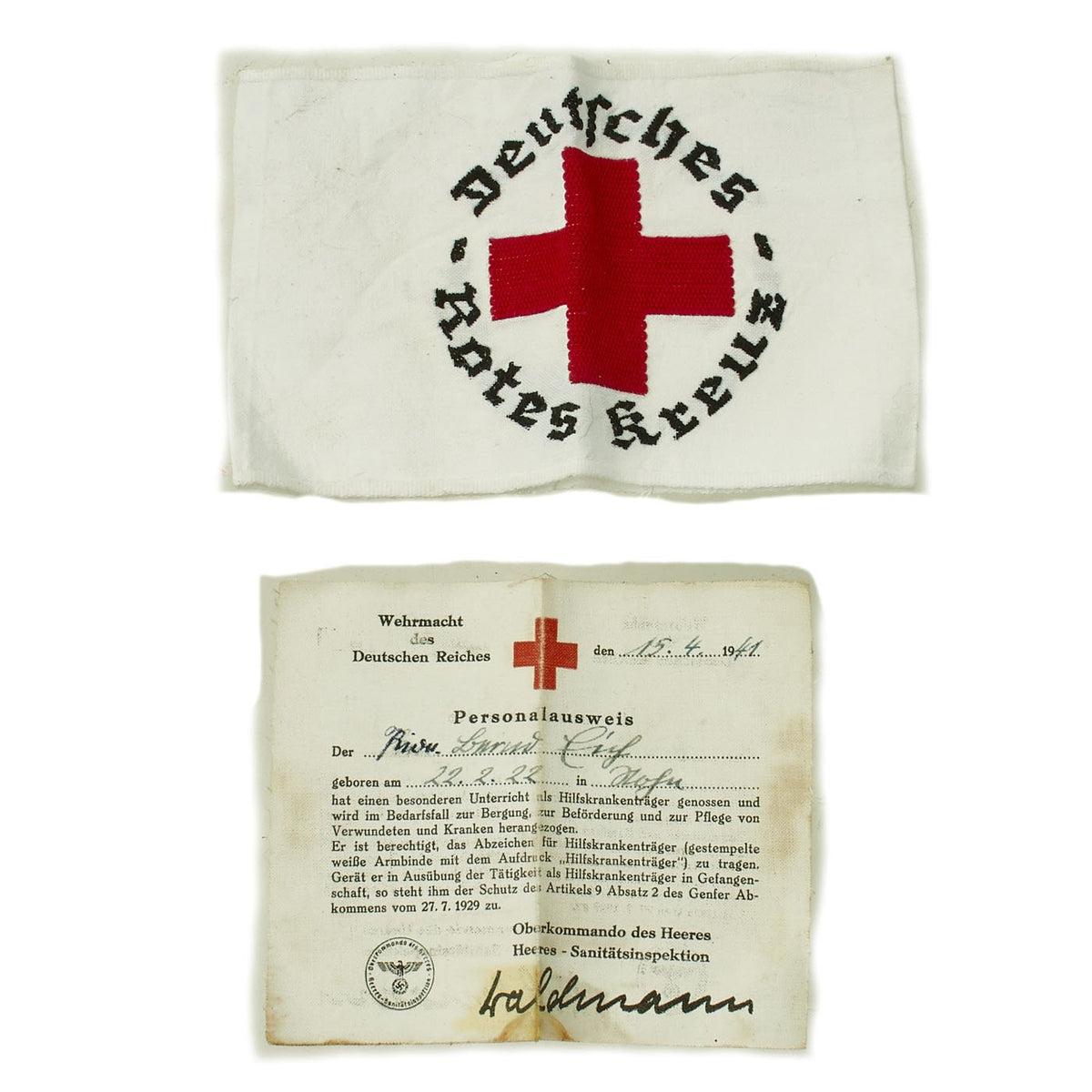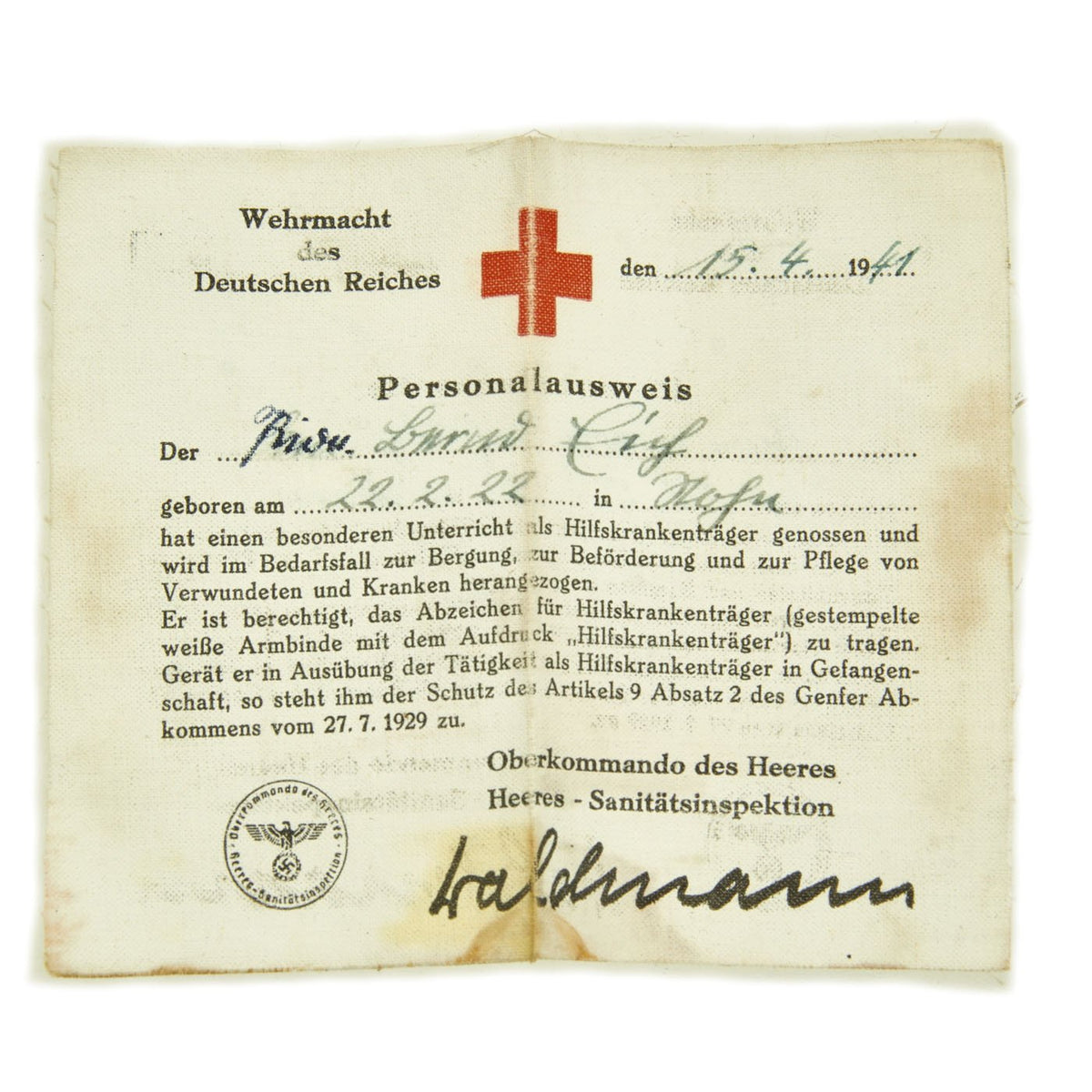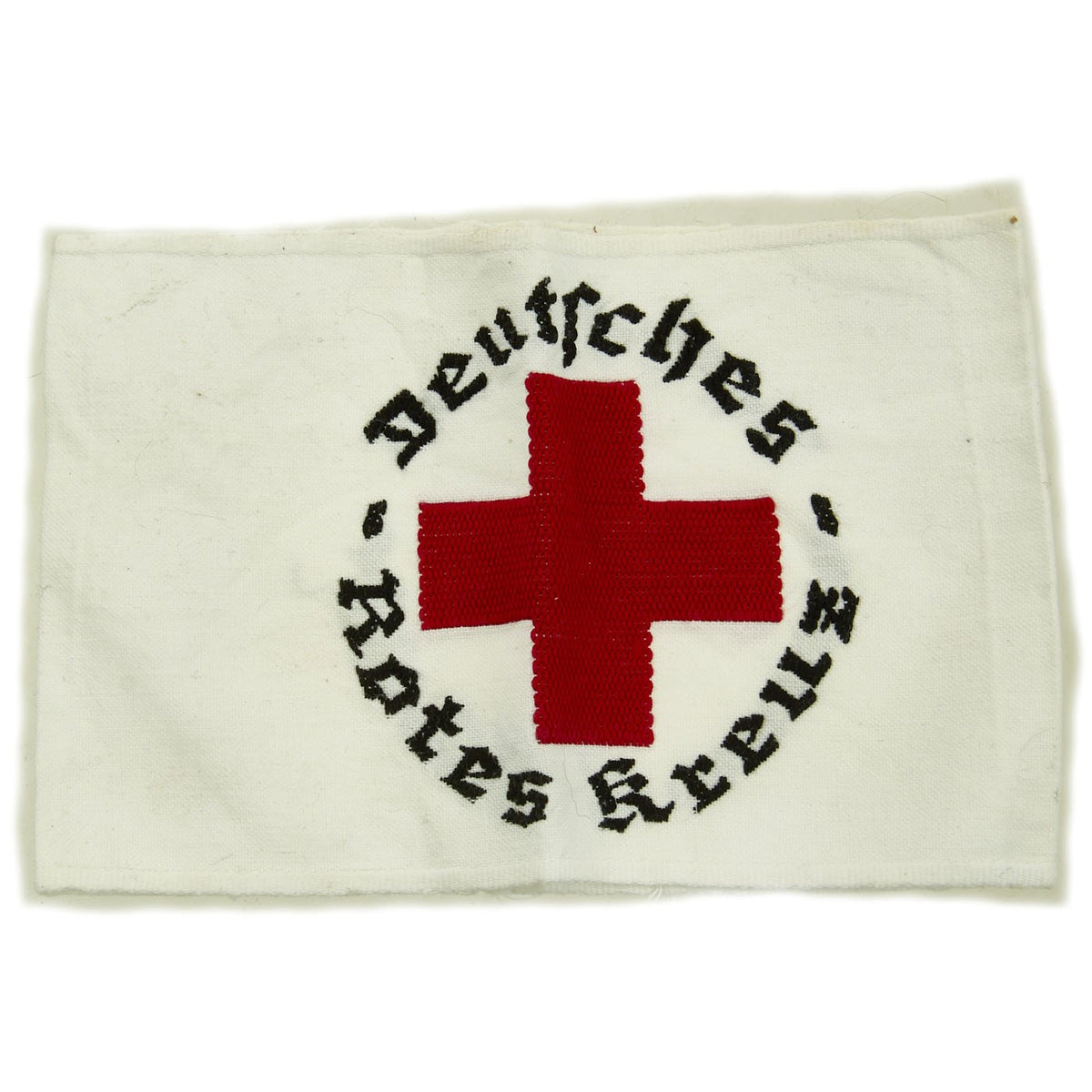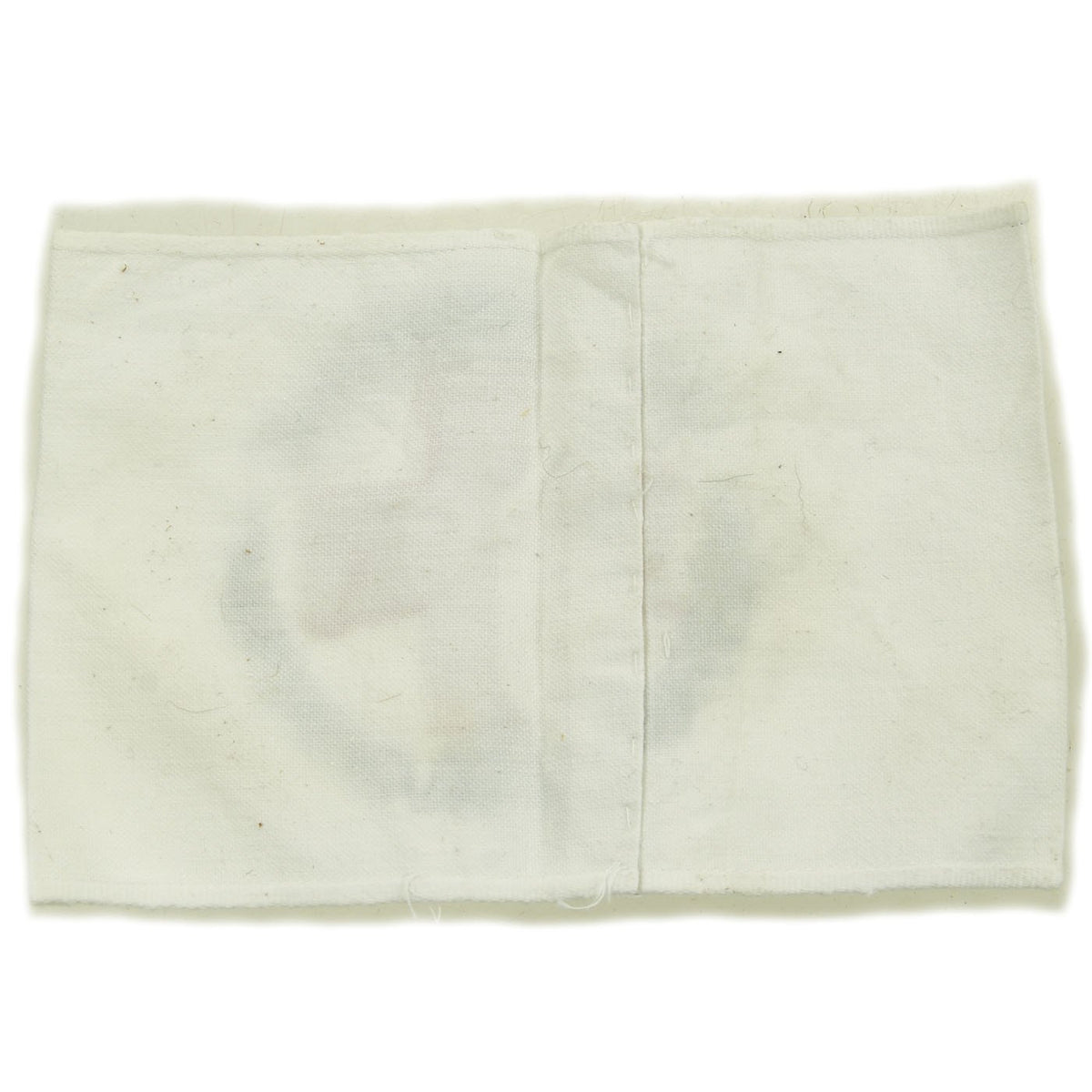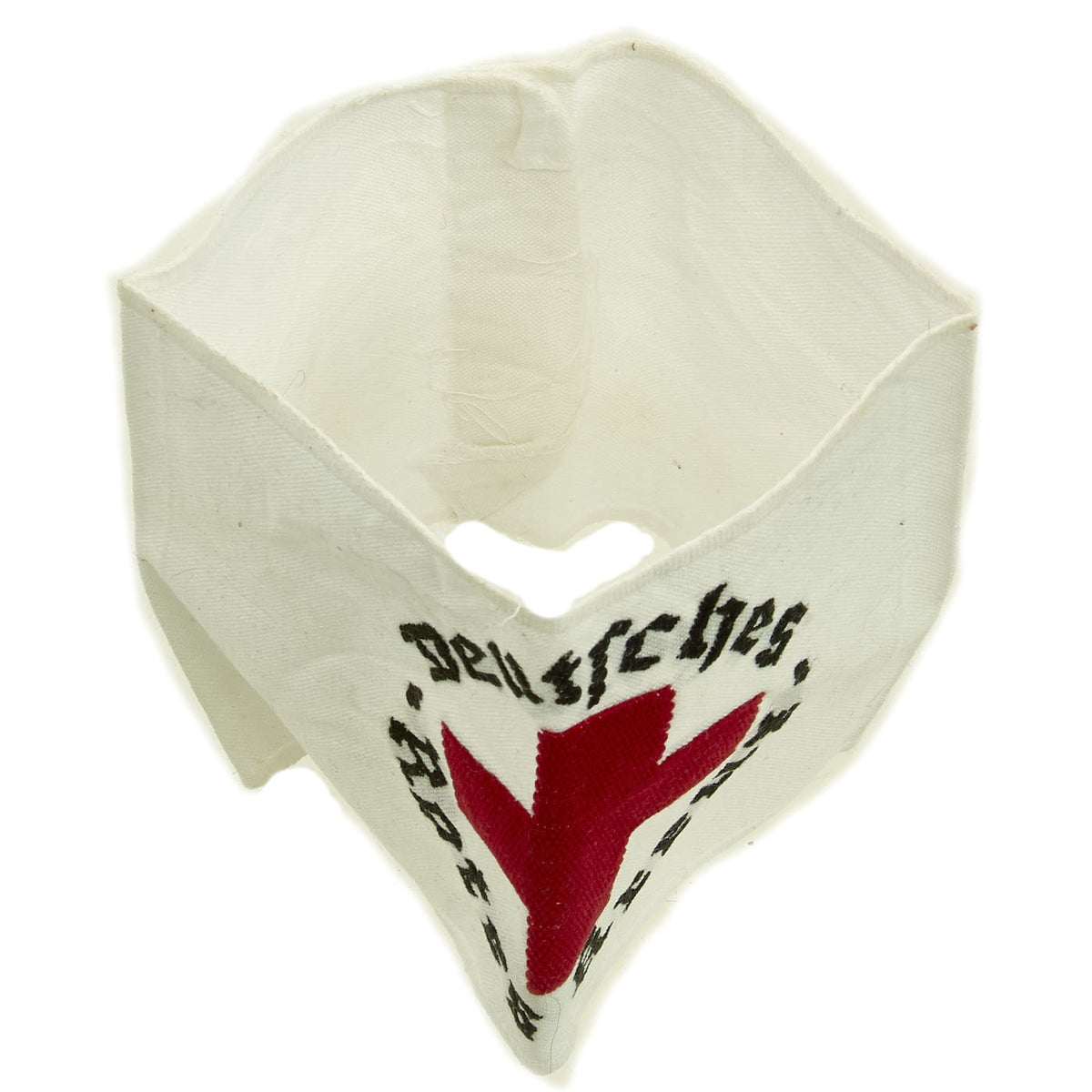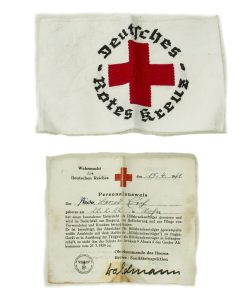Original German WWII DRK Red Cross Armband with Fabric Identity Card – Deutsches Rotes Kreuz Original Items
$ 249,95 $ 99,98
Original Item: Only One Available. This is an excellent condition example of a German WWII DRK Red Cross fabric armband, complete with the correct fabric Personalausweis (Identity Card). The armband is the correct white cotton canvas, with a red heavily embroidered red cross and black script that reads; Deutsches Rotes Kreuz (German Red Cross). It measures about 14″ x 4 1/2″, and is sewn together in the back. It doesn’t show much sign of use.
The included fabric Identity Card is marked Wehrmacht des Deutschen Reiches (Defense Forces of the German Empire) in the upper left next to a “Red cross”, and a date of 15. 4. 1941. It identifies the person it was issued to, which we unfortunately cannot read, as well as their date of birth. The indication seems to be that they would be a Hilfskrankenträger (Auxiliary Stretcher Bearer) or Nurse, and have been appropriately trained as such. The rest is information regarding the specific agreements and laws. The id card is stamped and signed by an official from the German Army High Command Heeres Sanitätsinspektion (Army medical inspection) division.
A very nice DRK set, ready to add to your armband collection!
History of the German Red Cross (DRK)
The DRK, “Deutsches Rotes Kreuz” (German Red Cross), a voluntary civil assistance organization originally instituted in 1864, was officially acknowledged by the Geneva Convention in 1929. In December 1937 it gained status as a legally recognized organization by the NSDAP. As with other essential services in Third Reich Germany, it came under control of the NSDAP in late 1938 under the auspices of the Ministry of the Interior’s Social Welfare Organization.
History of the “Rec Cross” Symbol
It was important to clearly identify Medical personnel in the field. One of the early documents, such as the Amelioration of the Conditions of the Wounded in Armies in the Field signed August 22, 1864, by a number of Governments, already instructed that Flag and Arm Badges worn by Medical personnel would bear a Red Cross on a White Field. Both symbols when used on Hospitals, Ambulances, Evacuation and Aid Centers, were to be proof of their neutral status! These signs provided for neutrality of military and civilian protected personnel (it gave them non-belligerent status) exclusively engaged in removal, transportation, and treatment of wounded and sick, or the administration of sanitary formations and establishments, and entitled them to respect and protection from their enemies. The 1929 Geneva Convention which superseded the former agreement, was signed on July 27, 1929 by forty-seven countries (including the Axis countries, Germany, Italy, and Japan) and comprised numerous articles, among which Articles 9 and 21, recognizing that bearers of special identification cards and civilian protected personnel identified by armbands, and vehicles, and installations wearing Geneva Convention markings and markers, were all exclusively engaged in medical care activities, and consequently protected and respected by the Geneva Convention.
Fast Shipping with Professional Packaging
Thanks to our longstanding association with UPS FedEx DHL, and other major international carriers, we are able to provide a range of shipping options. Our warehouse staff is expertly trained and will wrap your products according to our exact and precise specifications. Prior to shipping, your goods will be thoroughly examined and securely secured. We ship to thousands clients each day across multiple countries. This shows how we're dedicated to be the largest retailer on the internet. Warehouses and distribution centres can be located throughout Europe as well as the USA.
Note: Orders with more than one item will be assigned a processing date depending on the item.
Before shipping before shipping, we'll conduct a thorough inspection of the items you have ordered. Today, the majority of orders will be delivered within 48 hours. The delivery time will be between 3-7 days.
Returns
The stock is dynamic and we cannot completely manage it because multiple stakeholders are involved, including our factory and warehouse. So the actual stock may alter at any time. It's possible that you may not receive your order once the order has been made.
Our policy is valid for a period of 30 days. If you don't receive the product within 30 days, we are not able to issue a refund or an exchange.
You can only return an item if it is unused and in the same state as the day you received it. You must have the item in its original packaging.
Related products
Uncategorized
Uncategorized
Uncategorized
Uncategorized
Band of Brothers ORIGINAL GERMAN WWII Le. F.H. 18 10.5cm ARTILLERY PIECE Original Items
Uncategorized
Angolan Rebel 1970s era 60mm Inert Display Mortar from Angolan Civil War Original Items
Uncategorized
Uncategorized
Uncategorized
Uncategorized
Uncategorized
Uncategorized
Uncategorized
Uncategorized
Armored Burgonet Helmet & Polearm from Scottish Castle Leith Hall Circa 1700 Original Items
Uncategorized
Uncategorized
Armoured Fighting Vehicles of the World: AFVs of World War One (Hardcover Book) New Made Items
Uncategorized
Australian WWII Owen MK1 Machine Carbine SMG Custom Fabricated Replica with Sling Original Items
